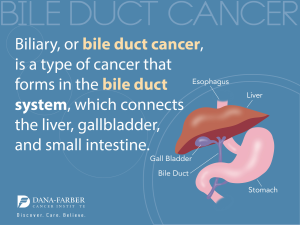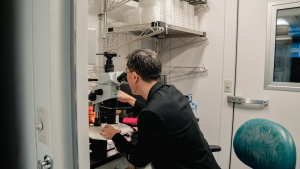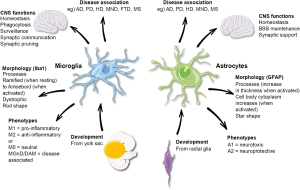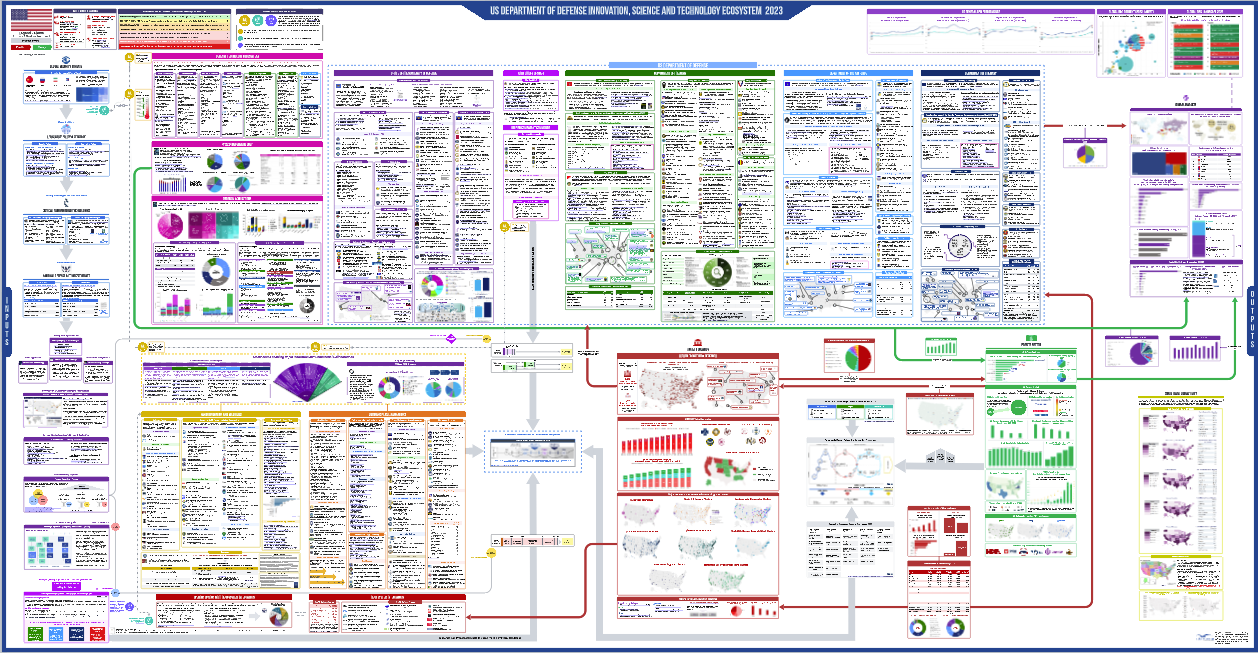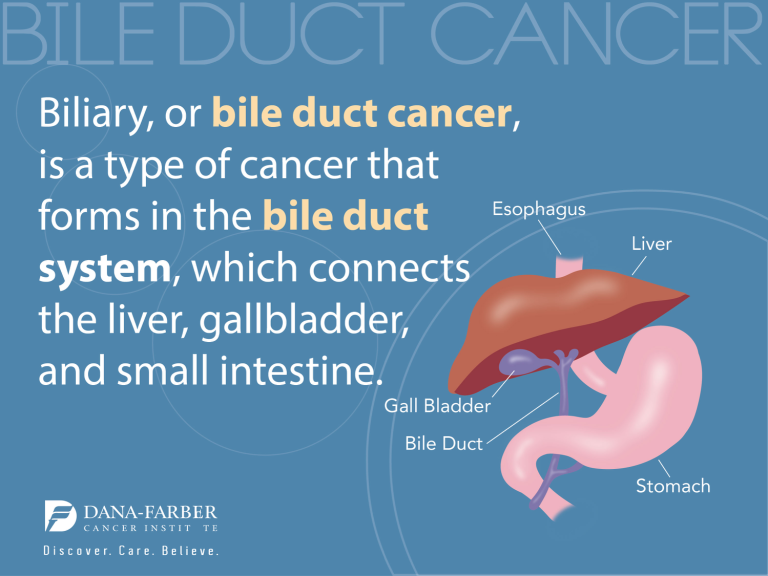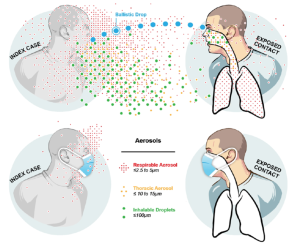The U.S. innovation ecosystem stands as a beacon of advancement, fueling remarkable progress in fields such as biomedical research and technological innovation. Born from necessity during World War II, this unique partnership between the federal government, academia, and private industry has fostered an environment ripe for scientific breakthroughs and revolutionary ideas. The strategic infusion of federal funding into research has not only supported the development of life-saving medicines and technologies but has also cultivated public-private partnerships that enhance collaboration and efficiency. As we look back on its origins, it’s clear that the U.S. innovation ecosystem has catalyzed significant advancements, making it the envy of nations worldwide. By understanding its foundations, we can appreciate the vital role it continues to play in shaping a healthier and more innovative future.
In the realm of scientific advancement, the American innovation framework serves as a collaborative nexus that integrates government initiatives, academic research, and private enterprise efforts. This functional web of public-private collaboration has elevated the nation’s capabilities in areas such as life sciences and technology development, driving breakthroughs that improve public health and enhance national security. Support systems established during pivotal moments in history, like the urgent demands of wartime research, have led to an ongoing commitment to funding and collaboration. The reinforcement of these relationships has spurred not only technological innovation but also a robust training ground for the next generation of researchers. As we navigate current challenges, it remains crucial to nurture this legacy of cooperation to sustain progress across multiple sectors.
The Origins of the U.S. Innovation Ecosystem
The U.S. innovation ecosystem began to take shape during World War II, rooted in a unique collaboration between the federal government, universities, and private industry. This unprecedented partnership was heralded by visionary leaders who understood the urgent need for scientific advancement in military applications. In 1940, as the war loomed, key figures from academia and industrial R&D laboratories approached President Franklin D. Roosevelt, proposing a systematic approach to leverage civilian scientists for military technological development. This melding of resources and intellect not only aided in the war effort but laid the groundwork for what would become a thriving ecosystem of biomedical research and innovation.
The Office of Scientific Research and Development (OSRD) played a pivotal role in this landscape, coordinating efforts and funding for wartime scientific endeavors. The agency’s establishment marked a significant shift, promoting public-private partnerships that enabled rapid advancements in medical solutions, such as the mass production of penicillin. The necessity of combating infectious diseases, which historically claimed more soldiers than battlefield injuries, catalyzed an aggressive push for innovation. Such government involvement in research would prove essential for the U.S. to maintain its technological edge, especially in biomedicine, setting patterns that would continue to evolve in the following decades.
The Role of Federal Funding in Biomedical Research
Federal funding has been a cornerstone of successful biomedical research in the United States, supporting pivotal studies that have led to scientific breakthroughs across various fields. The establishment of the National Institutes of Health (NIH) as a major funding entity highlighted the government’s commitment to advancing health research through grants and investments. This influx of resources has enabled universities and private firms to collaborate effectively, yielding innovative pharmaceutical developments and technological advancements in healthcare. Public-private partnerships have capitalized on these funds, resulting in enhanced research capabilities and significant contributions to public health.
However, recent debates surrounding federal funding for biomedical research—especially proposals to cap reimbursements for indirect research costs—pose a threat to this model. Such funding cuts could stifle the momentum built over decades and disrupt established partnerships that have proven instrumental in advancing health sciences. Maintaining robust federal support is critical to ensuring that the U.S. remains at the forefront of global biomedical innovation, as it not only drives research but also fosters a collaborative environment between academics and industry, essential for addressing complex health challenges.
Public-Private Partnerships: A Model for Innovation
Public-private partnerships (PPPs) have emerged as a successful model for fostering innovation in the U.S. economy, particularly in the biomedical sector. These collaborations harness the strengths of both sectors, combining the agility and creativity of private firms with the rigorous research capabilities of public institutions. The historical context of World War II illuminates how these partnerships began, as the urgent needs of the military required rapid technological advancements, spurring intense collaboration among researchers across disciplines. Such a model has replicated success in areas beyond healthcare, demonstrating its versatility and effectiveness in driving scientific innovation.
Today’s public-private partnerships continue to evolve, adapting to new federal policies and the dynamic landscape of biomedical research. By leveraging resources and expertise from both sectors, these collaborations have been critical in producing cutting-edge therapies and technologies that tackle pressing health challenges, from cancer treatments to vaccine development. As critics voice concerns about federal funding caps, the importance of nurturing these partnerships becomes ever more apparent. Safeguarding the synergy between public and private entities will be vital to sustaining the momentum of U.S. innovation in science and health.
Scientific Breakthroughs Fueled by Collaboration
The synergy fostered by collaboration among the U.S. innovation ecosystem’s pillars—government, academia, and industry—has resulted in a plethora of scientific breakthroughs over the decades. One monumental achievement was the mass production of penicillin during World War II. Initially considered a complex challenge, the combined efforts of scientific minds and resources resulted in the rapid development of this critical antibiotic, fundamentally changing modern medicine. The impact of this collaboration extended well beyond military health, leading to an antibiotic revolution that significantly reduced morbidity and mortality rates from infections.
Building on the foundation laid during the war, subsequent partnerships have produced groundbreaking advancements in various therapeutic areas, including vaccines, gene therapies, and personalized medicine. These achievements signify the power of collaborative efforts when addressing complex scientific problems. Moreover, the persistent influx of federal funding has enabled this collaborative spirit to thrive, ensuring that the U.S. remains a leader in technological innovation and biomedical research globally. The future of healthcare innovation will hinge on continued collaboration and investment in this unique ecosystem.
The Impact of Technological Innovation on Public Health
Technological innovations originating from the U.S. innovation ecosystem have had a profound effect on public health outcomes across the globe. Advancements in medical technology, developed through synergistic partnerships, have transformed the treatment and prevention of diseases, enhancing the quality of life for millions. For instance, the development of advanced imaging technologies, robotic surgical systems, and wearable health monitors exemplifies how innovation driven by public-private collaborations can lead to improved patient care and outcomes, significantly altering healthcare delivery.
As we examine the landscapes of modern healthcare, it’s clear that the integration of technology into public health initiatives is paramount. The rise of telemedicine, mobile health applications, and electronic health records illustrates the critical role of technological innovation in making healthcare more accessible and efficient. Nonetheless, as funding sources and federal policies evolve, it remains crucial to protect the partnerships that have been instrumental in developing these innovations. Ensuring sustained investment and collaboration will be essential for further advancements that can effectively address ongoing and emerging public health challenges.
Challenges Facing the U.S. Innovation Ecosystem
Despite its successes, the U.S. innovation ecosystem faces numerous challenges that threaten its status as the envy of the world. As discussions around federal funding and research priorities intensify, the potential for cuts to essential funding sources looms large. These budget constraints could hinder the collaboration between governments, universities, and the private sector, stifling the progress that has historically defined the U.S. biomedical landscape. The urgent needs of the current health crises, such as COVID-19, highlight the necessity for swift responses that require a robust network of researchers and funding.
In addition to funding dilemmas, there is increasing pressure to reevaluate the structure of public-private partnerships. Critics argue that bureaucratic hurdles and inefficiencies must be addressed to ensure that these collaborations can effectively drive innovation without impeding progress. Finding a balance between regulation and the freedom to innovate will be essential for maintaining the dynamics that have made the U.S. system successful. Addressing these challenges head-on is vital for preserving the integrity and effectiveness of the U.S. innovation ecosystem.
The Future of Biomedical Innovation
Looking ahead, the future of biomedical innovation in the U.S. hinges on the continued collaboration between federal agencies, institutions of higher education, and private industries. As the landscape of health research evolves rapidly with the advent of new technologies and methodologies, fostering a culture of innovation will be paramount. This includes not only enhancing existing partnerships but also creating new avenues for collaboration that leverage emerging technologies like artificial intelligence and machine learning in biomedical research.
Furthermore, as global health challenges persist, from pandemics to chronic disease management, the U.S. innovation ecosystem must adapt to meet these demands effectively. Emphasizing interdisciplinary research that brings together diverse expertise will be critical in developing comprehensive solutions. By investing in education and training for the next generation of scientists, policymakers can ensure a steady pipeline of skilled innovators ready to tackle the evolving challenges in healthcare. Ultimately, sustaining a robust innovation ecosystem will be crucial for the U.S. to maintain its leadership position in global biomedical research.
Lessons from Historical Scientific Collaboration
The history of U.S. scientific collaborations, especially during pivotal moments like World War II, offers valuable insights for contemporary research ecosystems. The striking successes achieved through the partnership of federal agencies and academic institutions underscore the importance of coordinated efforts in times of urgent need. Penicillin’s mass production exemplified how a crisis can lead to breakthroughs that not only serve immediate needs but also lay the groundwork for future advancements in medicine and technology. These lessons remain relevant today as researchers and policymakers navigate a increasingly complex global environment.
Moreover, historical collaborations highlight the necessity of flexibility and adaptation in response to emerging challenges. As new health threats arise, the capacity for rapid mobilization of resources and expertise must remain a priority. The sustained focus on public-private partnerships, with a keen awareness of their historical importance, will be essential in driving further innovation within the biomedical field. Embracing lessons from the past can guide the future of research collaborations, ensuring that they continue to thrive and produce substantial benefits for public health and welfare.
Global Implications of U.S. Biomedical Innovations
The influence of the U.S. biomedical innovation ecosystem extends well beyond its borders, affecting global health policies and practices. As many countries look to the U.S. model as a benchmark for their own research structures, the advancements achieved through public-private partnerships and sustained federal funding have significant implications worldwide. The development of vaccines, therapies, and medical technologies has not only improved health outcomes domestically but has also provided resources for combating diseases internationally, reinforcing the U.S. commitment to global health.
However, as the global health landscape continues to evolve, it is paramount for the U.S. innovation ecosystem to remain adaptable and inclusive. The introduction of international partnerships and collaborations could further enhance the impact of U.S. innovations on a global scale. By fostering collaborative research efforts that transcend borders, the U.S. can amplify its role as a leader in biomedical research, ultimately contributing to a healthier global community. Balancing domestic priorities with global responsibilities will ensure that U.S. innovations continue to impact health positively—locally and globally.
Frequently Asked Questions
How does the U.S. innovation ecosystem support biomedical research?
The U.S. innovation ecosystem supports biomedical research through a combination of federal funding, collaboration between government and academia, and public-private partnerships. This collaborative environment fosters scientific breakthroughs and accelerates technological innovation, vital for advancements in medicine.
What role do public-private partnerships play in the U.S. innovation ecosystem?
Public-private partnerships are crucial in the U.S. innovation ecosystem as they bridge the gap between academic research and commercial development. They harness resources from both sectors to tackle complex challenges in biomedical research and technological innovation, leading to significant economic and health benefits.
How has federal funding influenced the U.S. innovation ecosystem in biomedical research?
Federal funding has profoundly influenced the U.S. innovation ecosystem by providing essential resources for academic research and development. This financial backing empowers scientists to pursue groundbreaking projects, facilitates scientific breakthroughs, and enhances the overall capacity for technological innovation in biomedical fields.
Can you explain the historical significance of scientific breakthroughs in the U.S. innovation ecosystem?
Scientific breakthroughs in the U.S. innovation ecosystem, particularly during and after World War II, laid the foundation for modern biomedical research. The war catalyzed federal funding and collaboration among universities and industries, resulting in transformative innovations like penicillin, which revolutionized healthcare and set the stage for future advancements.
What challenges does the U.S. innovation ecosystem face in sustaining biomedical research?
The U.S. innovation ecosystem faces challenges in sustaining biomedical research, such as potential cuts to federal funding and debates over indirect research costs. These challenges can impact the viability of public-private partnerships, ultimately affecting the capacity for scientific breakthroughs and technological innovation across the healthcare landscape.
How does the U.S. innovation system compare globally in terms of biomedical research?
The U.S. innovation system is often regarded as the envy of the world due to its successful integration of federal funding, robust academic institutions, and strong private sector involvement in biomedical research. This collaboration has led to unprecedented technological innovation and scientific breakthroughs, maintaining the U.S.’s leadership in global health advancements.
| Key Point | Details |
|---|---|
| Origin of the U.S. Innovation Ecosystem | The foundation was laid during World War II with government-supported research leading to mass production of penicillin. |
| Public-Private Research Partnerships | Federal funding has facilitated collaborations between government, universities, and private companies, crucial for advancements in biomedicine and technology. |
| Impact of World War II | The war created an urgent need for technological innovations, leading to the establishment of agencies like OSRD to coordinate research efforts. |
| Contribution of NIH | The NIH, which was limited pre-war, has become a key player in funding and facilitating biomedical research and innovation. |
| Long-term Outcomes | Breakthroughs in military medicine, such as penicillin, led to a golden age of drug development in the postwar era. |
| Training Future Scientists | The war also trained a new generation of scientists, which has continued to benefit the U.S. innovation ecosystem. |
| Challenges and Modern Reforms | Current discussions around federal funding reforms could impact the effectiveness of public-private partnerships in innovation. |
| Global Envy | The U.S. innovation system, particularly in biomedicine, is regarded as a global leader and is emulated worldwide. |
Summary
The U.S. Innovation Ecosystem stands as a model for collaboration between government, academia, and private sector, significantly contributing to advancements in various fields, especially biomedicine. Emerging from the challenges posed during World War II, this ecosystem has harnessed the power of public-private partnerships to drive innovation and scientific discovery. As ongoing discussions about funding and policy reforms continue, it is crucial to recognize and preserve the strengths of this framework that has proven essential to national health and economic growth.

